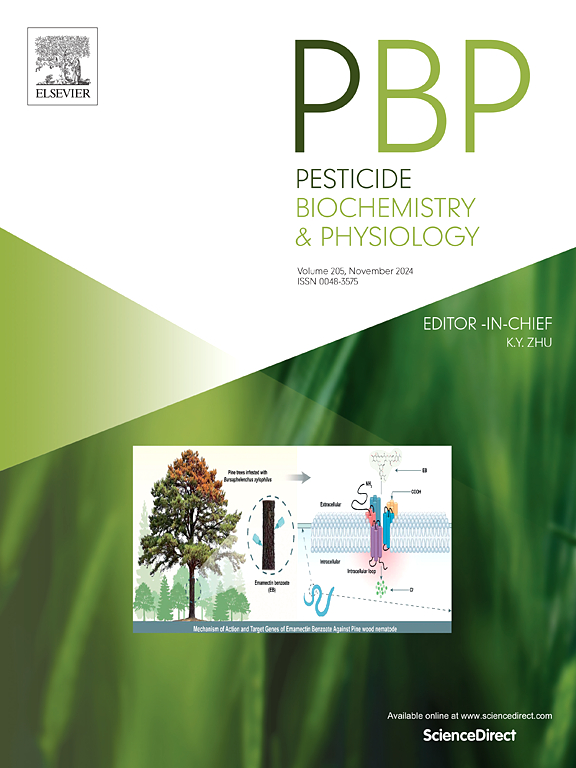Differential pathogenicity of heterologous nucleopolyhedroviruses on Spodoptera frugiperda corresponds to modulated expression of immune-response-related genes
IF 4.2
1区 农林科学
Q2 BIOCHEMISTRY & MOLECULAR BIOLOGY
引用次数: 0
Abstract
The fall armyworm Spodoptera frugiperda (J.E. Smith) (Lepidoptera: Noctuidae) is a notorious invasive pest wreaking havoc on various crops globally. Nucleopolyhedroviruses (NPVs) are viral pathogens that specially target lepidopteran pests. However, the homologous virus, Spodoptera frugiperda multiple nucleopolyhedrovirus (SfMNPV), has not been commercialized in China. Therefore, understanding the molecular mechanisms underlying heterologous virus-host interactions can inform the design of virus-based insecticides for controlling S. frugiperda. The pathogenicity of the four heterologous NPVs on S. frugiperda varied greatly. Mamestra brassicae multiple nucleopolyhedrovirus (MbMNPV) exhibited the most potent virulence on larvae and induced the most robust sublethal effects on adults. Spodoptera exigua multiple nucleopolyhedrovirus (SeMNPV) infection was characterized by more moderate pathogenicity, and larvae were relatively resistant to Helicoverpa armigera single nucleopolyhedrovirus (HaSNPV) and Spodoptera litura multiple nucleopolyhedrovirus (SlMNPV). Larval mortality was virus-concentration and larval stage dependent. Specifically, the corrected mortality rate of third instar larvae after treatment with 1 × 106, 1 × 107, and 1 × 108 OBs/mL MbMNPV was 88.9 %, 100.0 %, and 100.0 %, respectively. All four NPVs negatively affected the longevity and fecundity of S. frugiperda adults. Female adults surviving treatment with MbMNPV and SeMNPV were unable to lay eggs. Transcriptomic analysis revealed that MbMNPV infection might suppress the antiviral immune response, and dysregulate biological pathways of S. frugiperda larvae to facilitate systemic infection. However, the overall transcript profiles remain unchanged after SlMNPV infection. The results reinforce the potential of NPVs, specifically MbMNPV, as potent biocontrol agents for S. frugiperda. These findings yield valuable insights into the complex arms race between S. frugiperda and NPVs that may advance the development of virus-based strategies to mitigate the destructive impact of this pest.

求助全文
约1分钟内获得全文
求助全文
来源期刊
CiteScore
7.00
自引率
8.50%
发文量
238
审稿时长
4.2 months
期刊介绍:
Pesticide Biochemistry and Physiology publishes original scientific articles pertaining to the mode of action of plant protection agents such as insecticides, fungicides, herbicides, and similar compounds, including nonlethal pest control agents, biosynthesis of pheromones, hormones, and plant resistance agents. Manuscripts may include a biochemical, physiological, or molecular study for an understanding of comparative toxicology or selective toxicity of both target and nontarget organisms. Particular interest will be given to studies on the molecular biology of pest control, toxicology, and pesticide resistance.
Research Areas Emphasized Include the Biochemistry and Physiology of:
• Comparative toxicity
• Mode of action
• Pathophysiology
• Plant growth regulators
• Resistance
• Other effects of pesticides on both parasites and hosts.

 求助内容:
求助内容: 应助结果提醒方式:
应助结果提醒方式:


